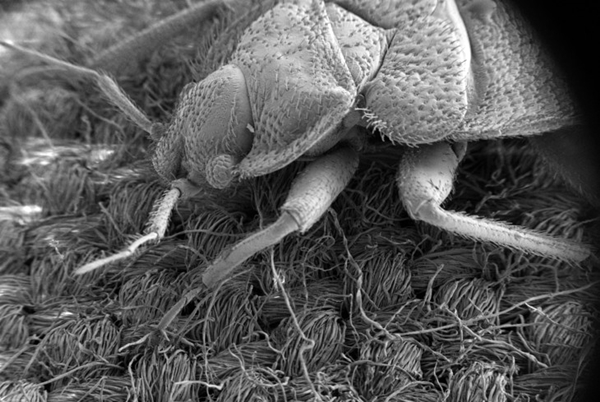23 March 2017. Research from a lab at Pennsylvania State University led to a technology for controlling bedbug infestations with natural enemies that are harmless to humans. A team led by Penn State agricultural entomologist Nina Jenkins published results from a lab test of its biopesticide in the 20 March issue of the journal Pest Management Science, and started a company to take the product to market.
Jenkins and colleagues from Penn State in University Park and North Carolina State University in Raleigh are seeking new methods for controlling bedbugs, a scourge affecting homes and hotels, as well as a public health hazard in the U.S. and worldwide for decades. Chemical insecticides were once effective against bedbugs, but in recent years bedbugs developed a resistance to broad-spectrum chemical insecticides. Raising room temperatures, an alternative method for chasing away bedbugs, can be expensive; the authors cite data estimating the cost of this technique at $500 to $1,000 per room.
Even with effective chemicals, stopping bedbugs is a difficult and time-consuming task. “They’re hiding in little cracks and crevices,” says Jenkins in a university statement, who adds controlling the pest, “involves collecting all of your clothing and laundering everything, keeping in it plastic bags, and reducing all of your clutter, so that a pest controller can actually apply the chemicals to the areas where the bedbugs may be.”
The Penn State/North Carolina State team is taking a different approach to stopping bedbugs, unleashing a natural adversary that’s also harmless to humans. That bedbug opponent is a fungus known as Beauveria bassiana that infects bedbugs and causes them to die within 7 days. Spores from Beauveria bassiana stick to the bedbugs, then germinate and colonize in the bugs’ bodies. Bedbugs also can spread the fungi spores to other bedbugs, magnifying their impact; only a fraction of a bedbug colony needs to be exposed to the fungi for an entire colony to be treated.
In their study, the researchers tested a bioinsecticide product made from Beauveria bassiana against deltamethrin, a commercial insecticide used to control bedbugs, among other pests. The team tested the treatments against 3 strains of bedbugs both susceptible and resistant to chemical insecticides. The researchers found the mortality rate for resistant bedbugs exposed to deltamethrin ranges from 16 to 40 percent. For bedbugs exposed to the Beauveria bassiana product, the mortality rate jumps to 94 percent.
The fungal bedbug treatments have the brand name Aprehend for which Penn State’s technology transfer office applied for a patent. Aprehend is sprayed on surfaces as a barrier treatment, applied quarterly to prevent bedbug infestations from occurring. Jenkins and postdoctoral researcher Giovani Bellicanta started the company ConidioTec that licenses the rights to the technology and is taking Aprehend to market.
Jenkins and Bellicanta are taking advantage of the new Invent Penn State program to get ConidioTec off the ground, which includes grant funding for regulatory approvals and legal help for entrepreneurs. “We were really lucky because Invent Penn State came along at just the right time,” says Jenkins. “We’ve been able to tap into all of these amazing resources, and just the general atmosphere and attitude within the university toward helping entrepreneurs and promoting entrepreneurship has helped carry us to this point.”
More from Science & Enterprise:
- Gates Grant Funding Malaria Control Test Products
- RNA-Nanoparticle Spray Protects Against Plant Viruses
- Smart Laser Device Tracks, Kills Mosquitoes
- FDA Gives Initial Clearance for Engineered Mosquitoes
- Tick Genome Sequenced, Control Strategies ID’ed
* * *


 RSS - Posts
RSS - Posts
You must be logged in to post a comment.